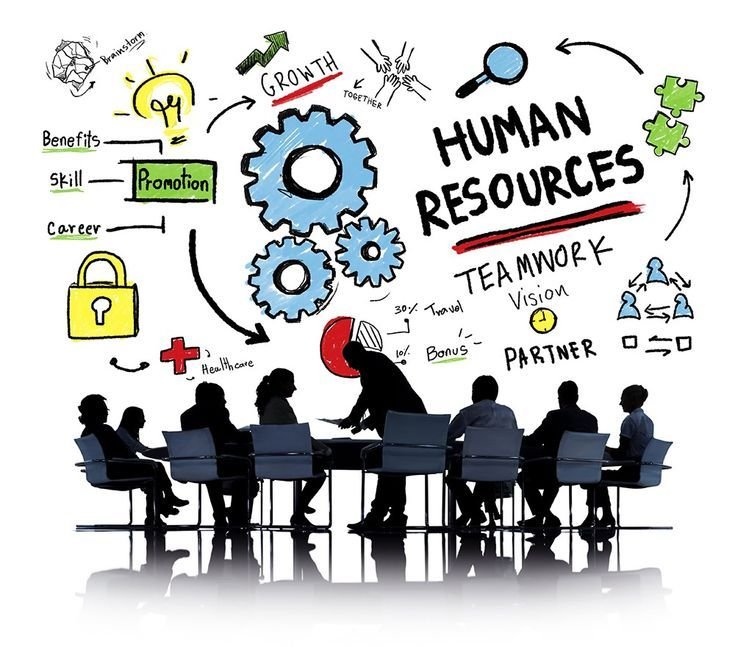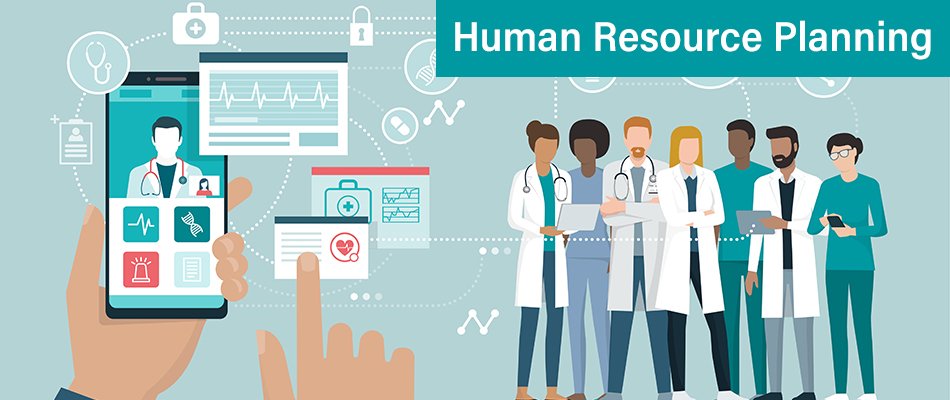Resource Management – this book covers the entire syllabus of “Leadership & Management” prescribed by the BNMC for Diploma in Nursing Science & Midwifery Students.
We tried to accommodate latest information and topics. This book is examination friendly setup according to the teachers’ lectures and examination’s questions. At the end of the book previous university questions are given. We hope in touch with the pook students’ knowledge will be upgraded and flourished. The unique way of presentation may make your reading of the book a pleasurable experience.
Definition of Resource Management:
In organizational studies, resource management is the efficient and effective development of an organization’s resources when they are needed. Such resources may include financial resources, inventory, human skills, and production resources.
or
“Resource management is a code of the ways to manage function by proper utilize of all three resources with its highest efficiency, so that they can facilitate intrinsic and extrinsic ability to get possible optimum result in an organization”
or
Resource Management is a facet of project management that deals with the human, financial, distribution and demands of project resources.

Importance of Resource Management:
1. Effective utilization of resource to the achievement of organizational goal
2. Establishment and maintenance of an adequate organizational structure and desirable working relationship, among all resources get greater possible optimum result
3. Recognition and satisfaction at organizational needs and goal
4. Provision of maximum opportunities for organizational development and advancement
5. Maintenance of high moral in the organization
Types of Resource Management:
Project Management:
- Project managers control tasks and teams to achieve predetermined goals in clearly defined sequences and time frames. When an organization has a PMO, it sets up and maintains standards for project managers to follow. Often, PMO standards are aligned with best practices guidelines in the Project Management Body of Knowledge (PMBOK) from the Project Management’Institute (PMI).
- For free tools and tips, check out these project management resources and marketing solutions.
Human Resources Management:
- People are the main resource of any company, and finding and managing team members that ‘fit’ is of strategic and tactical importance.
- Human resources management deals with recruiting and selecting the right people, providing appropriate onboarding, and developing performance appraisals and compensation and benefits. Human resources management is also concerned with staff motivation; safety and welfare, and complying with labor regulations.
- Human resource managers and teams are evolving beyond a traditional, task-oriented position to a more strategic organizational role. To learn more, read “Human Resource Management 101: Functions, Policies & Procedures” and “Welcome to the HR Revolution Strategic Human Resources Management.”

Natural Resource Management:
- This is the stewardship of resources like land and soil, water, and plants and trees, so they’ll be available for future generations.
Financial Resource Management:
- This pertains to anything related to money, including assets (cash, stock, bonds, etc.) land debts (like loans).
Enterprise Asset Management:
- This refers to directing the capital assets of an enterprise, like a corporation or non-profit.
Public Asset Management:
- Directing the capital asset of a government, like city, county, state, or a nation.
Digital Asset Management:
- Maintaining the storage and security of digital items (e.g. corporate documents, media).
Facility Management:
- This is related to the operation of buildings like offices, data centers, warehouses, and hospitals.
Infrastructure Managements
- Building, operation, and maintenance of structures like roads, bridges, electrical grids, and sewers.
Inventory Management:
- Maintaining the inventory of a business to maximize profitability and customer satisfaction.
IT Service Management:
Overseeing the information technology assets and services for an organization, often by a third party via an SLA-based contract.
Criteria of Resource Management:
- Obtain a realistic view of both demand and capacity to deliver.
- Manage and prioritize work requests and set appropriate expectations with key stakeholders.
- Determine true resource availability.
- Put the right resources on the right work at the right time,
- Understand what roles and/or skill sets to hire to fulfill stakeholder commitments.
- Increase and improve communication between project and resource managers and team
members. - Spot problems earlier in the process.
- Provide objective methods to prioritizing work ensuring demand is balanced against capacity to deliver.
- Connect strategy to execution.
- Deliver programs that drive innovation and transformational change.

Elements of Resource Management
Among crucial elements of resource management, the following are the most key:
➤ Resource Plan – Every project plan should have a resource plan as its component. The resource plan should contain all aspects of your project from beginning to end that pertain to resources required.
➤ Resource Breakdown Structure – Here, you will break down the resources required to complete the project in a hierarchy as you would in a work breakdown structure or an organizational breakdown structure.
➤ Responsibility Assignment Matrix – this is where the resource or organizational breakdown structure meets up with the work breakdown structure to assign responsibilities to the various branches in the hierarchy.
➤ Resource Over allocation – Over allocation of a resource is when a resource has been assigned more work than can be completed during normal work hours. Resource allocation often leads to overtime and overspending on financial resources.
Resource Histogram -This graphic representation can cue project managers whether there are any resources being over allocated.
➤ Resource Dependency – If two tasks require the same resource to complete them, then these tasks are resource dependent. If a task can only be completed by one resource, it is resource-dependent. A resource dependent task has particular constraints linking it to a particular resource.
➤ Resource Leveling – Leveling resources involves redistributing an imbalance of allocated work. It assists project team members by keeping them from becoming overwhelmed, working overtime, or running into project burnout.
Materials Management
Definitions of Materials Management:
‘Materials Management’ is a term used to describe “controlling the kind, amount, location, movement and timing of various commodities used in production by industrial enterprises”.
or
Materials Management is the planning, directing, controlling and coordinating those activities which are concerned with materials and inventory requirements, from the point of their inception to their introduction into the manufacturing process.
Material resources in health care management include-
- Medical equipment
- Medicines
- Health facilities
- Health commodities
- knowledge
Importance of Material Management:
Material management is a service function. It is as important as manufacturing, engineering and finance. The supply of proper quality of materials is essential for manufacturing standard products. The avoidance of material wastage helps in controlling cost of production. Material management is essential for every type of concern.
The importance of material management may be summarized as follows:
➤ The material cost content of total cost is kept at a reasonable level. Scientific purchasing helps in acquiring materials at reasonable prices. Proper storing of materials also helps in reducing their wastages. These factors help in controlling cost content of products.
➤ The cost of indirect materials is kept under check. Sometimes cost of indirect materials also increases total cost of production because there is no proper control over such materials.
➤ The equipment is properly utilized because there are no break downs due to late supply of materials.
➤ The loss of direct labour is avoided.
➤ The wastages of materials at the stage of storage as well as their movement is kept under control.
➤ The supply of materials is prompt and late delivery instances are only few.
➤ The investments on materials are kept under control as under and over stocking is avoided.
➤ Congestion in the stores and at different stages of manufacturing is avoided.

Functions of Material Management:
Material management covers all aspects of material costs, supply and utilization. The functional areas involved in material management usually include purchasing, production control, shipping, receiving and stores.
Production and Material Control
Production manager prepares schedules of production to be carried in future. The requirements of parts and materials are determined as per production schedules. Production schedules are prepared on the basis of orders received or anticipated demand for goods. It is ensured that every type or part of material is made available so that production is carried on smoothly.
Purchasing:
Purchasing department is authorized to make buying arrangements on the basis of requisitions issued by other departments. This department keeps contracts with suppliers and collects quotations etc. at regular intervals. The effort by this department is to purchase proper quality goods at reasonable prices. Purchasing is a managerial activity that goes beyond the simple act of buying and includes the planning and policy activities covering a wide range of related and complementary activities.
Non-Production Stores:
Non-production materials like office supplies, perishable tools and maintenance, repair and operating supplies are maintained as per the needs of the business. These stores may not be required daily but their availability in stores is essential. The non-availability of such stores may lead to stoppage of work.
Transportation:
The transporting of materials from suppliers is an important function of materials management. The traffic department is responsible for arranging transportation service. The vehicles may be purchased for the business or these may be chartered from outside. It all depends upon the quantity and frequency of buying materials. The purpose is to arrange cheap and quick transport facilities for incoming materials.
Materials Handling
It is concerned with the movement of materials within a manufacturing establishment and the cost of handling materials is kept under control. It is also seen that there are no wastages or losses of materials during their movement. Special equipment’s may be acquired for material handling.
Receiving:
The receiving department is responsible for the unloading of materials, counting the units, determining their quality and sending them to stores etc. The purchasing department is also informed about the receipt of various materials.
Objectives of Materials Management:
Primary Objectives
- Low price
- High inventory turnover (Inventory turnover = Sale/Average Inventory)
- Low cost of acquisition and possession
- Continuity of supply.
- Consistency of quality.
- Low payroll (wage) cost.
- Favorable supplier relations.
- Development of personnel.
- Maintenance of regular records.
Secondary Objectives:
- Favorable reciprocal relations.
- New materials and products.
- Make or buy decision.
- Standardization.
- Product improvement.
- Inter-departmental harmony.
- Forecast.

Principles of Resource Management:
Resource Principles are a fundamental truth established by research, investigation, and analysis. The following can also be considered as the principles of Resource Management:
- Principle of Individual Development – To offer an equal opportunity to every employee so as to realize his/her potential and capability.
- Principle of the Scientific Selection – To place the right individual in the right job.
- Principle of the Free Flow of Communication– To open & encourage upward, downward, formal as well as informal communication.
- Principle of the Participation – To associate with employees at each and every level of
decision making. - Principle of a Fair Remuneration-To pay fair and equitable wages & salaries to talented employees.
- Principle of an Incentive – To review the performances of the employees and rewarding them accordingly.
- Principle of the Dignity of Labor – To treat each and every employee with respect and dignity.
- Principle of Labor-Management co-operation – To promote industrial relations and labor laws.
- Principle of Team Spirit – To ensure co-operation & teamwork amongst the employees.
- Principle of Contribution to National Prosperity – To provide a higher work purpose to all the employees and to contribute to the national prosperity and integrity.
Human Resource Management (HRM)
Definition of Human Resource Management:
According to (Storey, 1995)
“HRM (Human resource management) is a distinctive approach to employment management which seeks to achieve competitive advantage through the strategic deployment of a highly committed and capable workforce, using an array of cultural, structural and personnel techniques”.
According to Edwin Flippo
“Human resource management is the Planning, organizing, directing, controlling of procurement, development, compensation, integration, maintenance and separation of human resources to the end that individual, organizational and soudel objectives are achieved.”

Resources Need in Management/Components of Resource Management:
The manager who have management responsibility need some basic resources by which they perform their functions and bring the organizational success to being. Those essential resources are
1. Human resources
2. Physical or material resources
3. Financial or monitory resources
4. Fiscal resource
5. Information resources
6. Time resources
7. Markets or consumers or stake holders
8. Position and power authority
A. Human resources:
The people work in an organization through and with whom, a manager achieves the goals such as assembly, line works, dealers etc.
Human resource management refers to a group of activities which includes –
- Recruiting of the staff
- Placement
- Transfer
- Promotion classification and pay
- Training
- Employee health and welfare services
- Leave regulation
- Retirement and separation
B. Physical or material resource:
The physical like land building, furniture, machines, materials, stationary, goods etc. are integrated with human for goal achievement.
Material resources in health care management include-
- Medical equipment
- Medicines
- Health facilities
- Health commodities
- knowledge
C. Financial or monitory resource:
These are most vital part of the management process to maintain the flow of others sources. The usual sources of financial resource are cash/capital, product, bank loans, and revenue/development budget selection.
D. Fiscal resource:
Fiscal resources are amount of money that a manager use to purchase goods and supports the administrative and management activities and all kind of service delivery of any organization effectively and efficiently.
- Budget
- Personal household
- Charity
- Health insurance
- Governmental revenue
- Foreign aids
E. Information resource:
It is another essential resource for smooth running of management functions towards a batter future. Sources of information are planning staked, organization chart, methods, procedures, records, books literature, Internet system etc.
F. Time resources:
It is the time schedule (available or sanctioned time for the assigned task) on which manager sketches their activities.
G. Markets, consumers/stake holders:
These are the king managerial resources on which organizational result/sources in reflected.
H. Position and power authority:
These are legitimate sources or resources through which a manager gets entry in organization and can operate the functional process with in it.

Key Facets of Human Resource Management
In their book Assessment Centers in Human Resource Management, George C. Thornton III and Deborah E. Rupp lay out the high-level functions of a strong human resource management program. While the main focus of the book is using assessment centers in the process, these categories apply to HR management in general.
➤ Recruitment: Seek out people that might fill open positions (both current and future).
➤ Selection: Choose the most qualified candidates from those recruited.
➤ Placement: Match each hired candidate to the position best suited to their skills and abilities.
➤ Training and Development: Give people the tools, skills, and training. they need to succeed and advance.
➤ Performance Appraisal: Evaluate the accomplishments and competence of people, and make a plan to improve those that are lacking.
➤ Organizational Development: Make changes to the organizational structure to improve efficiency and productivity.
➤ Human Resource Planning: Ensure that there will be enough people available in the future
➤ Promotion and Transfer: Move people to new positions as their skills and the needs of the organization changes.
➤ Layoffs: The process of reducing headcount is not pleasant, but it needs to be accounted for when outside forces or changes in priorities, result in too many employees or employees whose skills no longer meet the needs of the organization.
See More:
